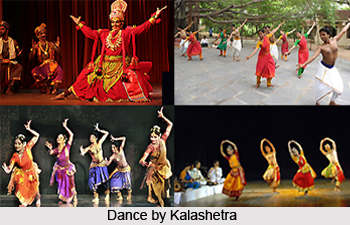Dasi Attam, a classical dance form of India, has its origin deeply rooted in the regions of South India, particularly in the states of Karnataka, Tamil Nadu, and Andhra Pradesh. Dasi Attam, just like other classical dance forms, has generated from Natya Shastra. The name of the dance form is derived from Devadasis, the practitioners of the dance, who were considered to serve gods through their dance. Dasi Attam is mainly an ancient dance form developed by the Dravidians, who were mostly unaffected by the various foreign invasions that has greatly influenced the evolution of culture in the country. In the recent ages, Dasi Attam has evolved into Indian classical dance form of Bharatnatyam, which is a blend of music, emotion, rhythm and expression.
History of Dasi Attam
In the pre-Aryan era, Dasi Attam had mainly originated as the divine dance form of the Dravidians, practiced by the Devadasis, who performed in the temples and royal courts. But after the Aryan invasion, the Dravidians were partly influenced by their culture and religion. Most of the Dravidians were converted into `Shaivite Hindus`, worshippers of Lord Shiva. There was considerable influence of Buddhism on Dasi Attam as well. The Buddhist proponents believed that dancing in the temples were unnecessary. But Dasi Attam remained largely unaffected. With the restoration of Brahminism, Dasi Attam recovered its splendour once again. There was huge demand for devadasis in most of the temples in the region.
 During the twelfth century, with the advent of Vaishnavism, numerous temples and sculptures, encompassing the art of that period were constructed which supported the performance of the devadasis. The temples of Halebid and Belur deserve special mention, as they depict the legend of the Queen Shantala Devi, who performed in these temples and was believed to be one of the greatest dancers of that time.
During the twelfth century, with the advent of Vaishnavism, numerous temples and sculptures, encompassing the art of that period were constructed which supported the performance of the devadasis. The temples of Halebid and Belur deserve special mention, as they depict the legend of the Queen Shantala Devi, who performed in these temples and was believed to be one of the greatest dancers of that time.
Influence of Foreign Invaders on Dasi Attam
With the fall of Vijayanagar Empire in the 16th century, Dasi Attam moved to the courts of the Deccan sultans, after being adequately influenced by the Muslim culture. With the end of the 19th century, the devadasis became unworthy of performing spiritual dances as they were occupied in immoral and illicit acts. During the British rule, Dasi Attam earned bad repute as the British believed that religion could not be expressed through dance and was considered immodest. Thus the British took adequate efforts to eradicate Dasi Attam from the present society and culture. Moreover the Hindus themselves had started to misinterpret the purpose of the practice of Dasi Attam and let the ancient heritage decline.
Revival of Dasi Attam
By the beginning of the last century, with the efforts of few distinguished personalities like Rabindranath Tagore, Menaka and Pandit Uday Shankar, various classical dance forms were rejuvenated. But it was with the adamant labours of E. Krishna Iyer, along with support from others, that authentic Dasi Attam was resuscitated in the modern society. With adequate coverage of the practice in print media, popularity of Dasi Attam was again restored by 1930s. Finally public performances of Dasi Attam had started in various regions of the country.
Evolution of Dasi Attam
 Rukumini Devi was the first who raised the level of Dasi Attam from being just a mere dance practiced by devadasis. She had a huge contribution in the development and evolution of Dasi Attam in modern India. After setting up her dance institute, Kalakshetra, Rukumini Devi `Brahmised` Dasi Attam, to appeal to the Brahmin and other upper classes, and finally converted it to the much dignified Bharatnatyam. Many others like Kamala, Kausalya, Shanta, supported this movement and thus improved the dance form in modern day India.
Rukumini Devi was the first who raised the level of Dasi Attam from being just a mere dance practiced by devadasis. She had a huge contribution in the development and evolution of Dasi Attam in modern India. After setting up her dance institute, Kalakshetra, Rukumini Devi `Brahmised` Dasi Attam, to appeal to the Brahmin and other upper classes, and finally converted it to the much dignified Bharatnatyam. Many others like Kamala, Kausalya, Shanta, supported this movement and thus improved the dance form in modern day India.
It is only with the efforts of such great dancers, that Dasi Attam has achieved the status and respect it truly deserves. Now this dance form has been improved to such an extent that many aspire to master the form in order to attain social respect and a sense of accomplishment. Bharatnatyam has received much acknowledgement within the country and overseas and has brought international recognition to national dancers. The evolution of the dance form, from the temples in ancient India up to the stages of modern India, has been both striking and outstanding.